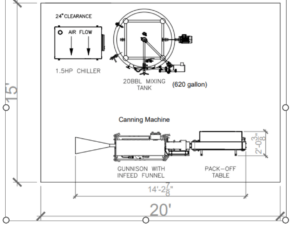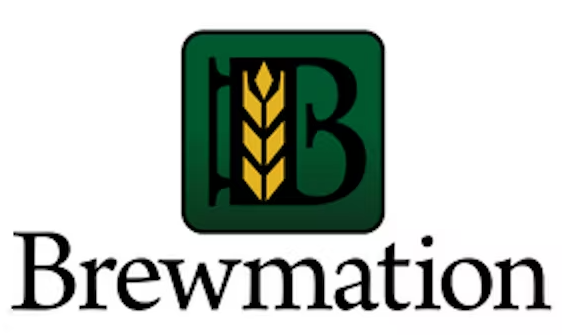White Paper – Cost-Effective Solution for Beverage Mixing Cocktails
As today’s beverage consumer’s preferences are constantly evolving, it’s crucial for existing breweries, infused and functional beverage producers, and new start-ups to evaluate cost-effective solutions to bring new products to market quickly. This white paper explores the benefits of deploying side entry agitators installed on glycol-jacketed brite tanks as an optimal solution for mixing and blending beverages. It will also briefly cover how to package these products for retail sale and distribution.
Maintaining Product Quality
In beverage production, consistent mixing and blending of liquids is important for maintaining product quality. This paper discusses the specific technical benefits, enhanced efficiency, and how this equipment configuration leads to optimal blending of ingredients, improved production economics, and packaging for sale or distribution. Glycol-jacketed stainless steel brite tanks are a commonly used vessel in beverage production, especially for carbonation and conditioning. Agitation is necessary for achieving uniform mixtures and even temperature distribution during the mixing process. Side entry agitators present a technically superior solution due to their unique design and configuration. Once the final product is ready, manufacturers must quickly get the product to its final packaging to maintain quality. Canning machines are the leading packaging system in the craft beverage industry due to their compact footprint, ease of use, and utilization of aluminum cans over glass or plastic.
Design and Operational Benefits of Side Entry Agitators:
- Compact Design: Side entry agitators are compact, reducing overall tank height requirements and allowing for efficient use of vertical space.
- Maintenance Accessibility: Easier access for maintenance and cleaning since the agitator is mounted on the side rather than the top, eliminating the need to climb onto tanks.
- Axial Flow Dynamics: The impeller design creates axial flow patterns, enabling rapid and uniform mixing of ingredients, additives, or carbonation gases throughout the tank.
- Reduced Vortex Formation: The horizontal orientation minimizes vortex formation, ensuring consistent mixing even at higher agitation speeds.
- Pressurized Vessels: tri-clap side entry for agitators allows the product to be held under pressure while top mount systems do not.
- Lower Power Consumption: Due to improved hydrodynamics, side-entry agitators require less power than top-mounted mixers to achieve the same mixing intensity.
- Product Integrity: Gentle mixing reduces shear stress on delicate beverage ingredients (e.g., fruit puree, hop oils), preserving product integrity and desired texture.
Process Benefits in Beverage Mixing and Blending:
- Uniform Ingredient Distribution: Consistent circulation ensures even distribution of added ingredients, preventing stratification or settling.
- Carbonation Efficiency: Effective dispersion of CO2 or nitrogen gases creates a uniformly carbonated or nitrogenated beverage.
- Thermal Homogeneity: Continuous mixing promotes uniform temperature distribution, reducing the risk of hot or cold spots that could affect yeast fermentation or carbonation.
- Cooling and Heating Efficiency: Accelerated heat transfer due to agitation speeds up the conditioning process, reducing overall production time.
- Improved Yield: Precise control over mixing parameters minimizes product loss due to over- or under-carbonation, ensuring consistent quality.
Comparison with Other Mixing Systems
- Limitations: Top-entry agitators often require taller tanks and consume more energy due to inefficient flow patterns. Vortex formation is more pronounced.
- Pressurization: Top entry agitators are not air-tight and do not allow for the product to be held under pressure in the tank.
- Drawbacks: Bottom-entry agitators may pose cleaning and maintenance challenges and increase the risk of sediment buildup. The vertical flow pattern may not be suitable for all beverage types.
Packaging your Crafted Product:
An increasing number of beverage producers are moving to aluminum cans as the preferred choice in packaging for retail sales and distribution. In addition, the compact nature, ease of use for canning machines, and recyclability of cans make this a more cost-efficient and sustainable alternative to glass and plastic packaging.
- Machinery Footprint: In-line canning systems that are roughly 3 feet wide by 15 feet long including the infeed, filling system, can sealing, and pack-off area can produce up to 30 cans per minute.
- Versatility: Canning machines can accommodate various beverage types, including carbonated drinks, infused beverages, craft beers, juices, RTDs, seltzers, and more.
- Sustainability: Aluminum cans are highly recyclable and have a smaller environmental footprint compared to glass and plastic bottles.
- Consumer Appeal: Many consumers prefer products with sustainable packaging, enhancing your brand’s appeal.
- Portability: Cans are more portable and convenient for consumers, especially for outdoor activities and events.
Tying it all Together:
If you’re interested in getting started with new beverage production or looking to add additional capabilities to your existing operations, a small-scale mixing and canning system costs less than $100,000. When you consider the benefits of side entry agitators for mixing alongside a compact canning system, you have a winning combination for creating craft beverages that complement any existing operation. Key components and pricing:
- Glycol Chiller: Important to keep the product cool during the mixing process and a small system is less than $9,000.
- 620-gallon Jacketed Mixing Tank: For proper mixing and process control a stainless brite tank with glycol jacket, side entry agitator, temperature control, valve, and piping cost around $21,000.
- Transfer Pump Cart: Used for transferring the final product from the tank to the canning machine and is less than $4,000.
- Gunnison Canning Machine: This complete system includes a can infeed, flip and rinse, filling, sealing and pack off station for under $65,000 and runs on a standard 120V dedicated circuit.
Sample System Layout:

Get Started in 2 Ways
- Request a quote for a complete processing and packaging system from Lotus.
- Shop brewing equipment now on the GW Kent website for the tanks, hoses, pumps, and parts to build your own system.
References:
-
- Doe, J. et al. (2021). Efficient Mixing Techniques in Beverage Production. Journal of Food Engineering, 130(5), 101-108.
- Smith, A. & Brown, R. (2019). Advanced Agitation Systems in Stainless Steel Brite Tanks. Beverage Science Review, 45(3), 67-75.
- Jones, P. & White, S. (2023). Energy Optimization in Beverage Agitation Processes. Process Engineering Quarterly, 18(2), 42-58.








